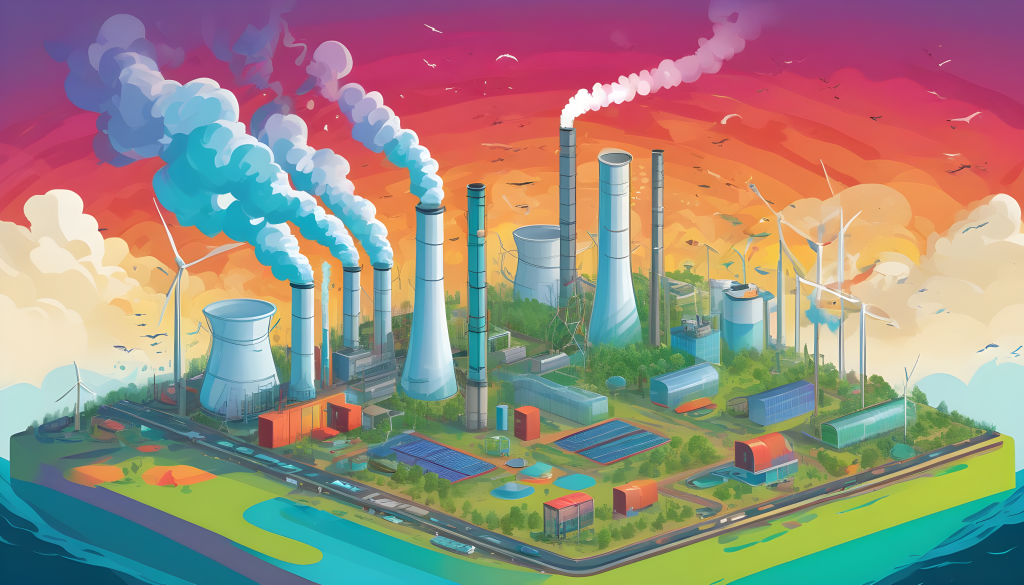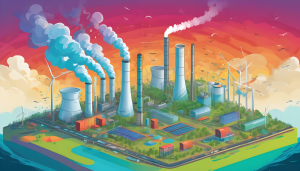
Reduce and capture greenhouse gas emission
Table of Contents
ToggleHow to reduce Greenhouse gas emission?
Here’s a comprehensive overview of strategies to reduce and capture greenhouse gas emissions.
1.Transition to Renewable Energy Sources:
- Replace fossil fuels with renewable energy sources like solar, wind, geothermal, and hydropower.
- Promote distributed renewable energy generation, enabling households and communities to produce their own clean energy.
- Invest in grid modernization to accommodate the integration of intermittent renewable energy sources.
2. Enhance Energy Efficiency:
- Implement energy-efficient appliances (ex: Energy Star) and lighting (LED and CFLs)
- Improve insulation and weatherization of buildings to reduce energy consumption.
- Adopt smart building technologies to optimize energy use and reduce waste.
3. Transform Transportation Sector:
- Promote electric vehicles (EVs) and provide incentives for EV adoption.
- Invest in public transportation infrastructure and encourage its use.
- Encourage cycling, walking, and carpooling to reduce reliance on personal vehicles.
4. Sustainable Agriculture and Land Use:
- Sustainable Agricultural Practices: Sustainable agricultural practices, such as cover cropping, crop rotation, and reduced tillage, can improve soil health and reduce greenhouse gas emissions from agriculture. Cover crops help protect soil from erosion and sequester carbon, while crop rotation and reduced tillage minimize soil disturbance and enhance soil organic matter.
- Methane Emissions Reduction: Methane is a potent greenhouse gas, and livestock production is a significant source of methane emissions. Adopting methane-reducing technologies and practices, such as improved feed management and manure digesters, can effectively mitigate these emissions.
- Forest Protection and Restoration: Forests play a critical role in the global carbon cycle, absorbing carbon dioxide from the atmosphere. Protecting existing forests and restoring degraded lands can significantly enhance carbon sequestration and reduce greenhouse gas emissions.
5. Industrial Process Optimization:
- Carbon Capture and Storage (CCS): CCS technologies capture CO2 emissions from industrial processes, such as cement manufacturing and power generation, and store them underground in geological formations. While CCS is a promising technology, its widespread deployment requires further development and cost reduction.
- Industrial Symbiosis: Industrial symbiosis involves the exchange of waste products or byproducts from one industry as inputs for another, reducing overall emissions and resource consumption. For example, waste heat from a manufacturing plant can be used to heat nearby buildings or to power another industrial process.
- Process Optimization: Optimizing industrial processes can improve energy efficiency and reduce emissions. This may involve adopting new technologies, implementing stricter process controls, or finding ways to reuse or recycle materials.
Greenhouse Gas Capture Technologies:
1. Direct Air Capture (DAC):
- DAC technologies extract CO2 directly from the atmosphere, using various chemical or physical processes.
- Captured CO2 can be stored underground or utilized in industrial processes.
- DAC is a relatively new technology with high costs, but it holds promise for large-scale CO2 removal.
2. Bioenergy with Carbon Capture and Storage (BECCS)
- BECCS involves growing biomass (e.g., plants, algae), converting it into bioenergy, and capturing the resulting CO2 emissions.
- BECCS is a promising technology, but concerns exist about land use and sustainability of biomass production.
3. Enhanced Weathering:
- Enhanced weathering involves spreading crushed silicate minerals on land or in oceans to accelerate natural CO2 removal processes.
- This approach is still in its early stages of development and requires further research on its effectiveness and potential impacts.
4. Nature-Based Solutions:
- Restoration of natural ecosystems, such as forests, wetlands, and mangroves, can enhance CO2 sequestration from the atmosphere.
- Sustainable land management practices, such as agroforestry and cover cropping, can also contribute to carbon sequestration.
- Nature-based solutions offer multiple benefits beyond carbon sequestration, including biodiversity conservation, water purification, and erosion control.
Addressing the GHG emissions challenge requires a comprehensive approach that combines emission reduction strategies with GHG capture technologies. While significant technological advancements are needed to scale up and enhance GHG capture methods, continuous efforts to reduce emissions at the source remain crucial. Transitioning to renewable energy sources, enhancing energy efficiency, and adopting sustainable practices across various sectors are essential steps towards achieving a low-carbon society and mitigating the effects of climate change.
You may be interested in: Understanding Carbon Credit






1 thought on “How to reduce Greenhouse gas emission”